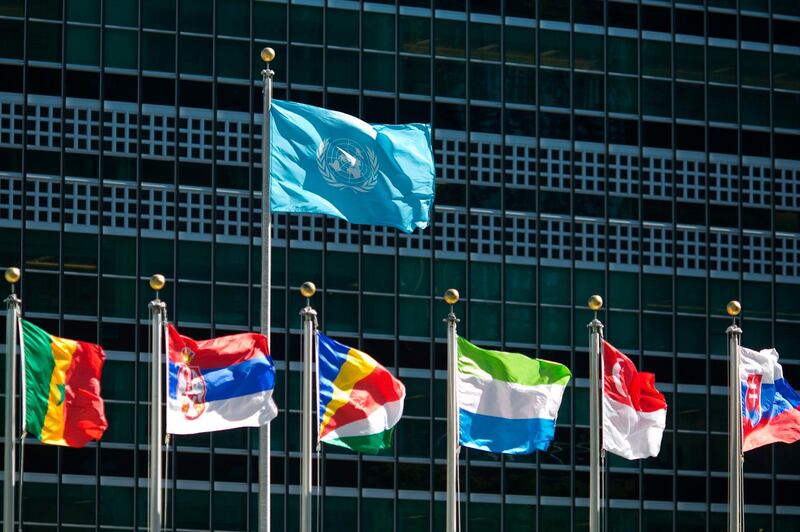As representatives of the 193 member states of the United Nations convene in New York for the organisation's 73rd General Assembly, it might be tempting to dismiss the annual gathering as a spectacular piece of theatre.
The general debate opens on Tuesday and, with each speaker limited to 15 minutes, the UN's main policymaking body has under a week to tackle an agenda framed by seven hugely challenging themes, ranging from the implementation of new global compacts on migration and refugees to reform of the UN and – the raison d'etre at the core of the organisation's being – the promotion of world peace.
The sheer scale of the ambition embraced by this daunting agenda should not be a cause for despair but for cautious optimism.
The assembly has met every year since the UN’s creation in October 1945, barely a month after the end of the Second World War, when 51 nations came together to prevent such a global catastrophe happening again. It has, so far at least, been successful in that endeavour and over the past 73 years, the UN has expanded its remit to create a forum in which nations great and small can turn for support and assistance in the face of all kinds of existential threats.
There have been failures; most notably the inability to prevent the slaughter of 800,000 Tutsis in Rwanda in 1994 and, the following year, the Srebrenica massacre of 8,000 Bosnian Muslims in a UN “safe area”. The UN also failed to prevent the 2003 US-led invasion of Iraq and all that has flowed from it.
But without the UN’s tireless fight for world peace and its parallel battle against hunger, poverty, illiteracy, poor health and the other targets of its Sustainable Development Goals, how much worse a place might the world be today?
As UN Secretary General Antonio Guterres acknowledged, there are multiple and multiplying conflicts and crises throughout the world, and nowhere more so than in the Middle East. From ongoing wars in Yemen and Syria to the instability in Iraq and Lebanon, all shot through with the poison of Iran’s nefarious empire-building, this region poses multiple challenges, which a week of delicate diplomatic negotiations cannot hope to solve.
What those discussions might yield, however, is a starting point for peace – whether in the Palestinian peace process, in the tug-of-war between the US and China or in consolidating the recent deal between Ethiopia and Eritrea. Beyond the fine rhetoric flowing from the podium in the General Assembly Hall, there is hope it will lead to resolutions paving the way to positive action.
The UN, as its late secretary general Kofi Annan once said, is the "last best hope of humanity". The annual General Assembly, at which almost every nation in the world has a platform, is the tangible manifestation of its unique role. It might be flawed, cumbersome and its reach might often fall short of its grasp. But without the UN, where else can the world turn for hope?





